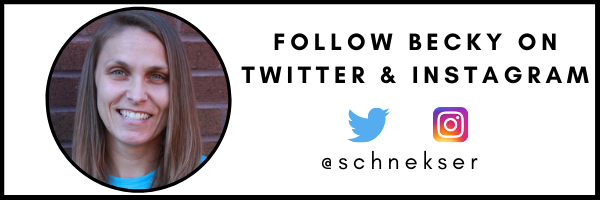TL;DR:
- Centering culture in learning experiences is important and should be a priority for all educators.

Image from Dave Burgess Publishing
- The book “Unpack Your Impact” by Naomi O’Brien and LaNesha Tabb is a great resource for learning and implementing cultural inclusion in the classroom.
- Centering culture goes beyond surface-level activities and should be seamlessly integrated into practices.
- Culture is an integral part of identity and must be celebrated and understood.
- Collaboration and sharing of resources and insights is key to continued growth and improvement in this area.
Centering Culture in Learning
Over the last few years, centering culture in the learning experiences I provide has been a priority for me. I know it should have been all along but I didn’t know better. Once I realized my oversight, thanks to some great educators in my online network, I chose to make changes, learn, be intentional, and help others do the same. No matter where you are in your learning and implementation journey, I wanted to share resources that have been instrumental in changing my practices and providing the ability for me to be cognizant in my own planning about centering culture.
A book that has been instrumental in my learning and implementation journey is Unpack Your Impact by Naomi O’Brien and LaNesha Tabb.
Whether your classroom is the most homogenous or heterogenous cultural representation, we have to integrate culture, and not just integrate. It must be seamlessly folded into our practices. Share on X
I created this video review for the Teach Better Team. This book brings you on the learning and implementation journey of Naomi and LaNesha, sharing insights, resources, and their experience with centering culture in elementary classrooms. Whether you teach the youngest or oldest learners, this book has incredible content that is worth your time!
Not only have these two amazing humans co-authored this book, but they have countless resources published. Check them out: Naomi’s TpT, Lanesha’s TpT, readlikearockstarteaching.com, and laneshatabb.com. They even have a Social Studies Club specifically targeting K-2 educators that I joined and can attest to the incredible content shared. Again, you might teach older learners, but these resources are easily scaled for older learners or might be just what you need to jump-start your own content creation! They are both great follows on social media as well.
[scroll down to keep reading]
Centering Culture
Centering culture isn’t something for just some schools, some educators, or some geographic locations, it’s for all of us all of the time. Whether your classroom is the most homogenous or heterogenous cultural representation, we have to integrate culture, and not just integrate. It must be seamlessly folded into our practices. I know this can seem daunting, intimidating, and time-consuming, and yes, it might very well be all of these, but we owe it to society to center culture, center understanding and acceptance, and center the celebration of culture.
It’s also not about surface level, superficial “holidays and heroes,” memorization of countries and capitals, memorization of anything.
It’s about internalizing culture, the beauty, the contributions, and the celebration of differences that are also ways of bringing us together.
In fact, in my experience, I have found that so many of the differences have connections across cultures. Ways of celebrating, times of celebrating, reasons for celebrating—many cultures overlap and have even modeled their own practices off those of other cultures. Sometimes it is in contrast from culture to culture, and there is strength, beauty, and opportunity here to learn and to connect.
Please don’t misinterpret my previous statement about “holidays and heroes” as a call to not use these opportunities for learning and learner engagement. If this is where you are currently, or your community is currently, that’s okay. After all, this is a journey of learning. What I mean is that it can’t stop there; that can’t be a check in the box serving as proof that we are integrating culture into our learning experiences. We have to do better. Culture must be an integral part of our practices so that it no longer stands alone and looks and feels like a check in the box. Culture isn’t a drop-down menu on a survey or to-do list, it is part of what makes us human and part of each person’s identity.
If we recognize that learning must be engaging and relevant to our learners, we must also recognize that a part of this engagement and relevance is culture.
Where are you on your journey? Do you have resources or insight to share? Let’s collaborate, let’s share, let’s learn and grow together!
About Becky Schnekser
Becky is an educator explorer with experience in PK-5, public and private, all subject areas. Currently, she prides herself on teaching field and expedition-style science to K-5 explorers in Virginia. Her passion resides in authentic experiences to educate learners of all ages and all subject areas. When not with young scientists in the field, she spends time around the world completing fieldwork with scientists in places like the Peruvian Amazon, Galapagos, and Iceland.



